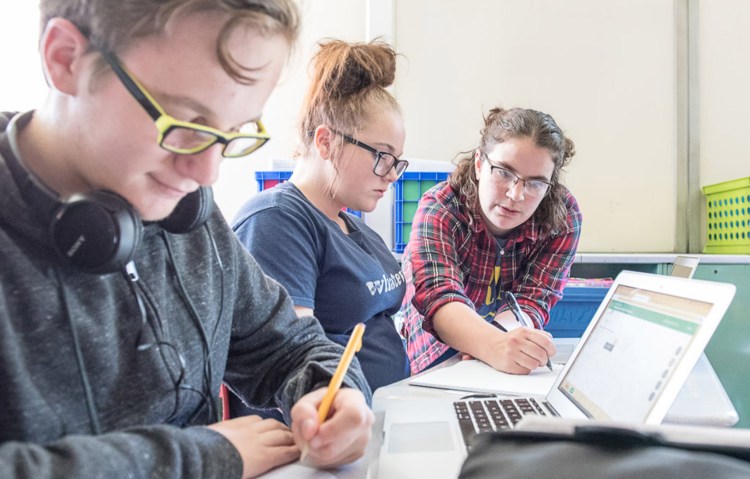Last year’s pushback from Lewiston-Auburn parents over a controversial student grading system has led to changes at both cities’ high schools.
Gone are proficiency-based learning grades of 1 to 4. Back are the traditional 0-to-100 grades.
The proficiency-based grades indicate whether students have mastered a defined set of skills so they can move on to the next set. The 1 means they don’t meet the standard, 2 means they partially meet it, 3 means they meet it and 4 means they exceed it.
At Lewiston High School the traditional system is still in transition, Principal Jake Langlais said. Grades will be tied to a student demonstrating they meet learning targets.
The switch “appears to be going well,” Langlais said. “We have fewer inquiries about scores.”
The 1 to 4 grades will be used only to measure a student’s work habits, Langlais said.
Superintendent Bill Webster said students in kindergarten to eighth grade still use the 1 to 4 grades.
Lewiston’s online electronic grade book goes live this week, and the first progress reports will be available Oct. 12.
In Auburn, the return to traditional grading has been well received, Edward Little High School Principal Scott Annear said. It’s not perfect, he said, but so far it seems to have “calmed a lot of anxiety.”
The 1-to-4 grades will be used to measure whether a student is meeting learning objectives in each course, Annear said. Edward Little students must get a minimum of 2.5 on mastering a subject’s targets.
Another change at Edward Little is a higher passing grade: from 70 to 76. The change came from a panel of teachers and Annear who worked on the new grading over the summer, the principal said.
In another change, Edward Little will have two semesters: fall/winter and winter/spring. The longer grading period will give students more time to improve learning, Annear said.
Auburn Middle School has also returned to traditional grading, Superintendent Katy Grondin said.
Among the complaints of parents last year was that under proficiency-based learning, students could retake quizzes, tests and homework if they failed. The logic was that they would learn from their mistakes.
After conversations with parents and teachers, “it came out loud and clear” that some students weren’t showing enough effort on their first attempt, Annear said.
Over the summer teachers tackled how to balance learning opportunities with work expectations. They came up with is a policy that allows students to re-do work or tests within a certain time and the first and second scores will be averaged.
bwashuk@sunjournal.com
Send questions/comments to the editors.



Success. Please wait for the page to reload. If the page does not reload within 5 seconds, please refresh the page.
Enter your email and password to access comments.
Hi, to comment on stories you must . This profile is in addition to your subscription and website login.
Already have a commenting profile? .
Invalid username/password.
Please check your email to confirm and complete your registration.
Only subscribers are eligible to post comments. Please subscribe or login first for digital access. Here’s why.
Use the form below to reset your password. When you've submitted your account email, we will send an email with a reset code.